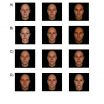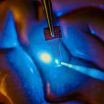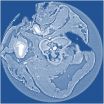(Press-News.org) Research in recent years has shown that people associate specific facial traits with an individual's personality. For instance, people consistently rate faces that appear more feminine or that naturally appear happy as looking more trustworthy. In addition to trustworthiness, people also consistently associate competence, dominance, and friendliness with specific facial traits. According to an article published by Cell Press on October 21st in Trends in Cognitive Sciences, people rely on these subtle and arbitrary facial traits to make important decisions, from voting for a political candidate to convicting a suspect for a crime. Referring to this systemic bias as "face-ism," the authors present its real-world consequences and discuss potential ways of overcoming it.
"Although we would like to think our judgments and choices are rational, impartial, consistent, and solely based on relevant information, the truth is that they are often biased by superficial and irrelevant factors," says Christopher Olivola of Carnegie Mellon University's Tepper School of Business, lead author of the review article, which he co-authored with Princeton University researchers Friederike Funk and Alexander Todorov. "This is a troubling human tendency that needs to be corrected, or at least mitigated, because faces are not valid predictors of a person's traits."
Numerous studies have shown that people form impressions of aspiring leaders based on their faces, and that these superficial impressions predict important social outcomes. For example, political candidates with naturally competent-looking faces are more likely to win elections than those who look incompetent, and having a naturally dominant-looking face predicts rank attainment in the military.
The bias to rely on facial appearance to make decisions can also lead to serious consequences in the legal system and financial realm. People are more likely to convict individuals whose faces look untrustworthy or guilty, while having a face that looks trustworthy strengthens an individual's ability to attract financial investments and procure loans.
Uncovering the facial variations that lead to impressions of competence or trustworthiness is still an active area of research. Although much remains unknown, recent methodological advances, such as sophisticated computer-based models that systematically manipulate facial appearance, are allowing researchers to tackle this question with unprecedented rigor.
Although face-ism is widespread, research suggests that it could be reduced by arming people with more relevant and valid types of information. For instance, knowing more about a political candidate and his or her positions or past behavior makes voters less likely to be influenced by facial traits. "We need to guard against letting our choices be biased by superficial cues," Olivola says. "In some contexts, educating people might be sufficient to reduce facial stereotyping. In other contexts, however, more research will be needed to identify the best way to mitigate the biasing influence of facial appearance."
INFORMATION:
Trends in Cognitive Sciences, Olivola et al. "Social attributions from faces bias human choices"
Impressions shaped by facial appearance foster biased decisions
2014-10-21
ELSE PRESS RELEASES FROM THIS DATE:
Resetting the circadian clock: Shift workers might want to skip high-iron foods
2014-10-21
(SALT LAKE CITY)—Workers punching in for the graveyard shift may be better off not eating high-iron foods at night so they don't disrupt the circadian clock in their livers.
Disrupted circadian clocks, researchers believe, are the reason that shift workers experience higher incidences of type 2 diabetes, obesity and cancer. The body's primary circadian clock, which regulates sleep and eating, is in the brain. But other body tissues also have circadian clocks, including the liver, which regulates blood glucose levels.
In a new study in Diabetes online, University ...
UNH scientist: Cosmic rays threaten future deep-space astronaut missions
2014-10-21
DURHAM, N.H. –- Crewed missions to Mars remain an essential goal for NASA, but scientists are only now beginning to understand and characterize the radiation hazards that could make such ventures risky, concludes a new paper by University of New Hampshire scientists.
In a paper published online in the journal Space Weather, associate professor Nathan Schwadron of the UNH Institute for the Study of Earth, Oceans, and Space (EOS) and the department of physics says that due to a highly abnormal and extended lack of solar activity, the solar wind is exhibiting extremely ...
UNH research highlights extent and effects of school violence
2014-10-21
DURHAM, N.H. – Six percent of U.S. children and youth missed a day of school over the course of a year because they were the victim of violence or abuse at school. This was a major finding of a study on school safety by University of New Hampshire researchers published this month in the Journal of School Violence.
"This study really highlights the way school violence can interfere with learning," says lead author David Finkelhor, professor of sociology and director of the Crimes Against Children Research Center (CCRC) at UNH. "Too many kids are missing school ...
Preservation technique for marginal livers prevents biliary stricture
2014-10-21
New research shows that a preservation technique known as sequential subnormothermic ex vivo liver perfusion (SNEVLP) prevents ischemic type biliary stricture following liver transplantation using grafts from donations after cardiac death (DCD). Findings published in Liver Transplantation, a journal of the American Association for the Study of Liver Diseases and the International Liver Transplantation Society, indicate that the preservation of DCD grafts using SNEVLP versus cold storage reduces bile duct and endothelial cell injury post transplantation.
The shortage ...
Could I squeeze by you?
2014-10-21
VIDEO:
Scientists at the US Department of Energy's Ames Laboratory modeled the 'passing probability' of molecules within the narrow pores of mesoporous nanoparticles. This understanding will help determine the optimal diameter...
Click here for more information.
Scientists at the U.S. Department of Energy's Ames Laboratory have developed deeper understanding of the ideal design for mesoporous nanoparticles used in catalytic reactions, such as hydrocarbon conversion to biofuels. ...
Animal therapy reduces anxiety, loneliness symptoms in college students
2014-10-21
ATLANTA—Animal-assisted therapy can reduce symptoms of anxiety and loneliness among college students, according to researchers at Georgia State University, Idaho State University and Savannah College of Art and Design. Their findings are published in the latest issue of the Journal of Creativity in Mental Health.
The researchers provided animal-assisted therapy to 55 students in a group setting at a small arts college in the Southeast. They found a 60 percent decrease in self-reported anxiety and loneliness symptoms following animal-assisted therapy, in which a ...
See-through sensors open new window into the brain
2014-10-21
MADISON, Wis. — Developing invisible implantable medical sensor arrays, a team of University of Wisconsin-Madison engineers has overcome a major technological hurdle in researchers' efforts to understand the brain.
The team described its technology, which has applications in fields ranging from neuroscience to cardiac care and even contact lenses, in the Oct. 20 issue of the online journal Nature Communications.
Neural researchers study, monitor or stimulate the brain using imaging techniques in conjunction with implantable sensors that allow them to continuously ...
Triplet threat from the sun
2014-10-21
WASHINGTON D.C. Oct. 21, 2014 -- The most obvious effects of too much sun exposure are cosmetic, like wrinkled and rough skin. Some damage, however, goes deeper—ultraviolet light can damage DNA and cause proteins in the body to break down into smaller, sometimes harmful pieces that may also damage DNA, increasing the risk of skin cancer and cataracts. Understanding the specific pathways by which this degradation occurs is an important step in developing protective mechanisms against it.
Researchers from the École Polytechnique Fédérale de Lausanne ...
Ancient Europeans intolerant to lactose for 5,000 years after they adopted agriculture
2014-10-21
By analysing DNA extracted from the petrous bones of skulls of ancient Europeans, scientists have identified that these peoples remained intolerant to lactose (natural sugar in the milk of mammals) for 5,000 years after they adopted agricultural practices and 4,000 years after the onset of cheese-making among Central European Neolithic farmers.
The findings published online in the scientific journal Nature Communications (21 Oct) also suggest that major technological transitions in Central Europe between the Neolithic, Bronze Age and Iron Age were also associated with ...
Exploring X-Ray phase tomography with synchrotron radiation
2014-10-21
WASHINGTON, D.C., October 21, 2014 -- X-ray phase tomography is an imaging technique that uses penetrating X-rays to create volumetric views through "slices" or sections of soft biological tissues, such as tumors, and it offers strongly enhanced contrast compared to conventional CT scans. Yet scientists still do not know which X-ray phase tomography methods are best suited to yield optimized results for a wide variety of conditions.
To answer this question, a large group of researchers in Europe set out to compare three different X-ray phase tomography methods at the ...






